Are you looking for a vegetable with a similar flavor and texture to parsnips that can be made into delicious dishes?
Today we will dive into the world of substitutions and explore exquisite alternatives!
Get ready to experience all the warmth and cooking versatility of these traditional root vegetables as you discover how their unique taste can add life and nutrition to your meals.
So let’s begin our journey – exploring everything there is to know about what you can substitute for parsnips in recipes!
What Are Parsnips?
Parsnips are a root vegetable that looks like a white carrot. It has a sweet, nutty flavor and can be cooked in many different ways.
Parsnips are commonly boiled or roasted, but they can also be mashed, pureed into soups, stir-fried with other vegetables, added to stews and casseroles, or even eaten raw.
These root vegetables are good sources of dietary fiber, vitamin C and folate, as well as an excellent source of potassium.
They are also rich in phytonutrients which offer additional health benefits.
Parsnips also contain compounds called polyacetylenes that have antioxidant properties and may help prevent certain types of cancer.
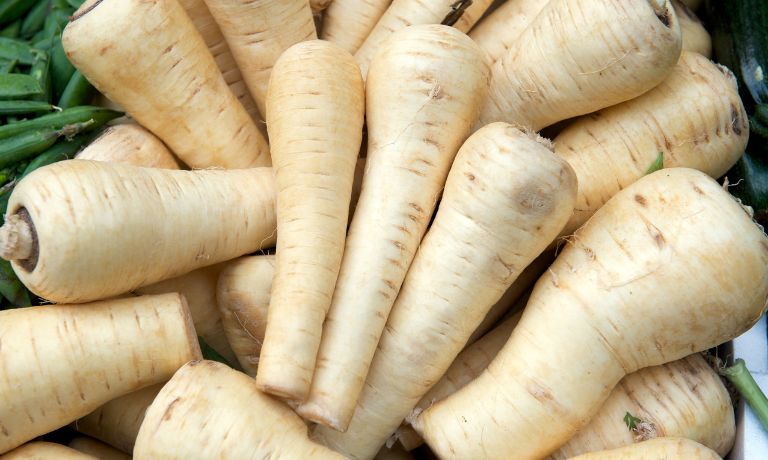
Substitutes For Parsnips
If you can’t find parsnips or don’t have them on hand, there are a few good substitutes that will still add flavor and texture to your dish.
Below are some common options:
White Carrots
White Carrots are a variety of vegetables related to the carrot family but with a unique white color.
White Carrots are slightly sweeter than regular carrots, with a mild flavor that is similar but not quite the same as parsnips.
They can be used instead of parsnips in many recipes, adding a unique twist to dishes like roasted vegetables or soups.
[display-posts id=”2820″ image_size=”thumbnail” posts_per_page=”1″]
The key difference between white carrots and parsnips is the texture; white carrots are firm and crunchy, while parsnips are softer and less dense.
White Carrots can also be cooked similarly to regular carrots, but they take slightly longer due to their denser texture.
For a truly unique experience, try roasting white carrots with herbs like rosemary or thyme and a bit of olive oil.
The result is a delicious, earthy flavor that can’t be found in traditional carrots, and it’s sure to become a staple in your kitchen!
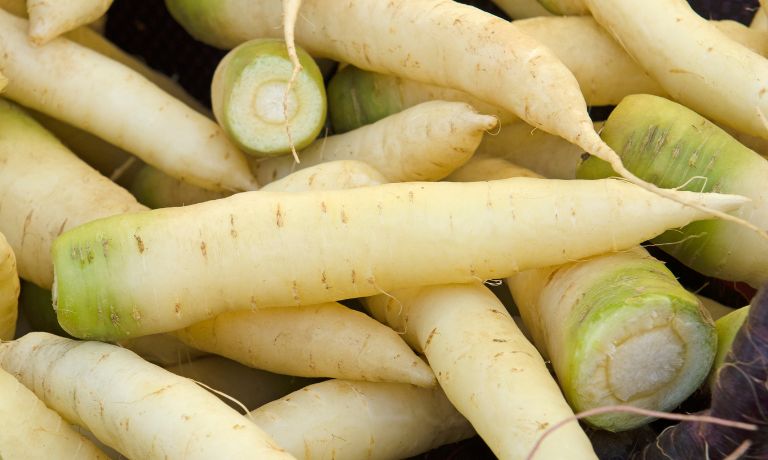
Orange Carrots
Orange carrots, or Dutch or Beta carotene carrots, are a unique type of carrot naturally sweeter than traditional carrots.
Unlike traditional carrots, orange carrots contain higher amounts of beta-carotene, giving them their distinctive orange color and sweet flavor.
Orange carrots are often used as a substitute for parsnips because of their similar shape and texture.
Orange carrots are also easier to find in most grocery stores than parsnips, making them a convenient substitution for recipes calling for parsnips.
Additionally, orange carrots already have a sweet flavor so they don’t require as much seasoning as traditional carrots or parsnips.
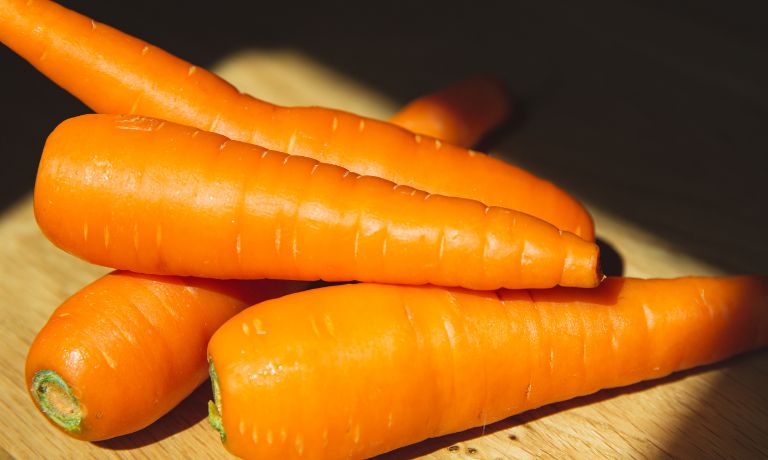
Kohlrabi
Kohlrabi is a root vegetable that has a mild taste and crunchy texture.
It is a member of the cabbage family and has an edible white bulbous stem.
While it looks like a turnip, it tastes more like a cucumber or cabbage. Its flavor pairs well with garlic, chives, olives, and apples.
Kohlrabi can be used as a substitute in recipes that call for parsnips, such as mashed potatoes or roasted vegetables.
It has many nutritional benefits as parsnips, with fewer calories and carbohydrates per serving.
Kohlrabi also contains more fiber and vitamin C than parsnips, making it a great choice for those looking to boost their nutrient intake.
Additionally, kohlrabi can be boiled, steamed, roasted, or eaten raw in salads and slaws.
Its mild flavor makes it a versatile ingredient for sweet and savory dishes.

Celery Root
Celery root, also known as celeriac or knob celery, is a variety of celery grown for its large, flavorful root.
It has a mild and slightly sweet flavor that can be used instead of parsnips when cooking.
Celery root is relatively low in calories but high in dietary fiber and essential vitamins and minerals, making it a nutritious vegetable option.
[display-posts id=”2172″ image_size=”thumbnail” posts_per_page=”1″]
It can be roasted, boiled, mashed, or pureed and added to soups and stews for extra flavor.
Celery root is also commonly used in French dishes such as celeriac remoulade or Cevennes salad.
With its mild taste and versatility in cooking, celery root is a great substitute for parsnips and can add extra flavor and nutrition to any meal.

Radish
Radish is a root vegetable similar in shape and size to a parsnip.
Radishes have an edible root bulb and leaves, which can be cooked or eaten raw.
They contain vitamins A and C, minerals, and trace elements.
Radishes are also low-calorie, making them healthier than parsnips for those watching their weight.
Radishes have a sharp, distinct flavor that is similar in taste to horseradish or mustard.
This bold flavor can substitute parsnips in many dishes, such as soups, stews, salads, and roasted vegetables.
They are also an excellent accompaniment to meats and fish, adding a nice crunch.
Finally, radishes can be easily pickled or fermented for longer-lasting storage.

Jicama
Jicama is a root vegetable native to Mexico and Central America. It has a mild, slightly sweet flavor and crunchy texture similar to a water chestnut.
Unlike other root vegetables, like parsnips, jicama can be eaten raw or cooked in various dishes.
The vegetable can also be used as an alternative to parsnips in many recipes.
Substituting jicama for parsnips gives dishes an extra crunch and flavor that you can’t get from the more traditional root vegetable.
Jicama is rich in fiber, vitamins C and B6, potassium, and magnesium, making it a nutritious alternative to parsnips.
Additionally, jicama is low in calories and fat, making it a great option for those looking to watch their weight.

Salsify
Salsify is a root vegetable that resembles parsnips but has a milder, more delicate flavor.
It can easily be substituted for parsnips in recipes due to its texture and taste similarities.
However, it also has unique characteristics that make it desirable in its own right. Compared to parsnips, salsify is a bit sweeter and creamier.
It also has a unique texture that can add extra interest to dishes like soups, stews, and mashed potatoes.
Salsify can also be used as an ingredient in salads or roasted for a light snack.
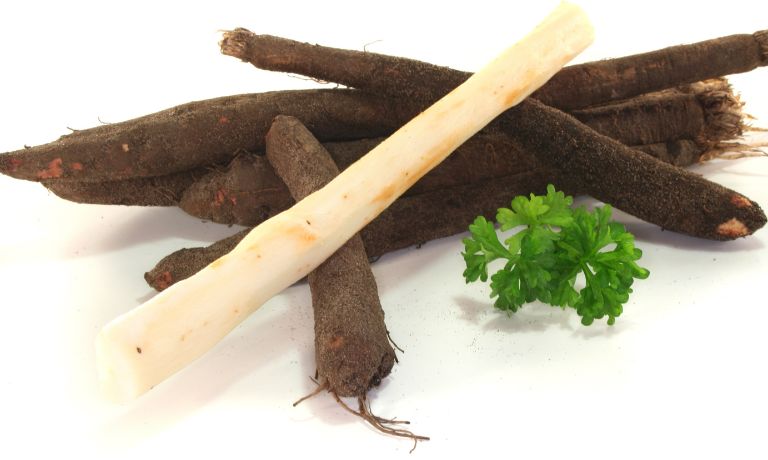
Turnip
Turnip (Brassica rapa) is a root vegetable that belongs to the cabbage family and is closely related to other cruciferous vegetables such as cabbage, rutabaga, kale, and radish.
It has a distinct but mild flavor and is usually eaten raw or cooked.
Turnips are an excellent source of vitamins A, C, and K.
They are also rich in minerals such as calcium, potassium, magnesium, iron, phosphorus, and zinc.
[display-posts id=”2908″ image_size=”thumbnail” posts_per_page=”1″]
Additionally, turnips have a high fiber content which can help aid digestion.
Both vegetables are rich sources of vitamins C, A, and K and minerals.
Additionally, turnips contain more fiber than parsnips which can help aid digestion. They are also a great source of antioxidants.
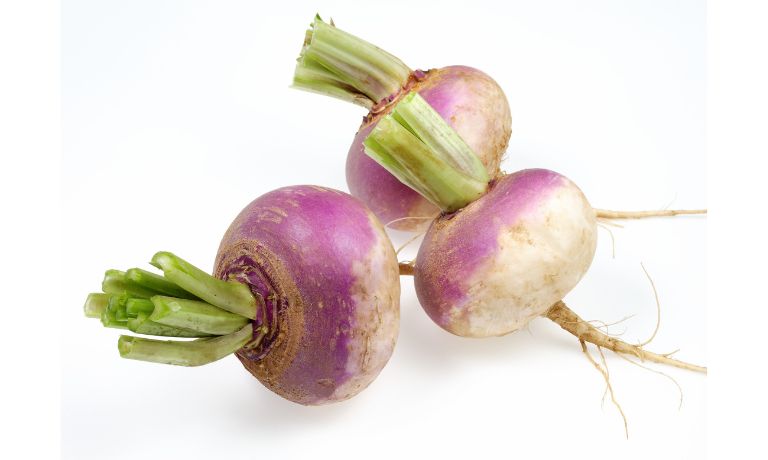
Rutabaga
Rutabaga is a root vegetable that has become increasingly popular in recent years.
It is a cross between cabbage and turnips and can be used as an alternative to parsnips in many recipes.
Rutabagas are more widely available than parsnips in some areas, making them a convenient substitute for those who cannot find them.
They are also sweeter and less fibrous than parsnips, which makes them a great replacement for those who prefer the flavor of rutabagas over that of parsnips.
Rutabaga is an excellent source of vitamins A, C, K, and B-complex and fiber and minerals.

FAQs
Can Parsnips Be Used In Place Of Carrots?
Yes, Parsnips can be used as an alternative to carrots in many recipes and dishes.
The flavor of the parsnip is very similar to that of the carrot, so it can be easily substituted in most recipes.
What Veggie Is Similar To Parsnip?
Rutabaga is the closest vegetable to parsnip in terms of flavor and texture. It has a sweet, nutty flavor with a crunchy texture.
Can I Use Parsnips In Place Of Potatoes?
Yes, you can use parsnips as a substitute for potatoes.
Parsnips are a great alternative to potatoes because they offer many of the same nutritional benefits but with fewer calories and carbohydrates.
Conclusion
Parsnips are a versatile root vegetable with a mild, slightly sweet flavor.
Parsnips can be used in many dishes and recipes, but several other root vegetables could work as substitutes if you want an alternative.
These include jicama, salsify, turnip, and rutabaga.
Each of these root vegetables has its unique nutritional profile and flavor, so you can experiment to find the one that best suits your needs.

